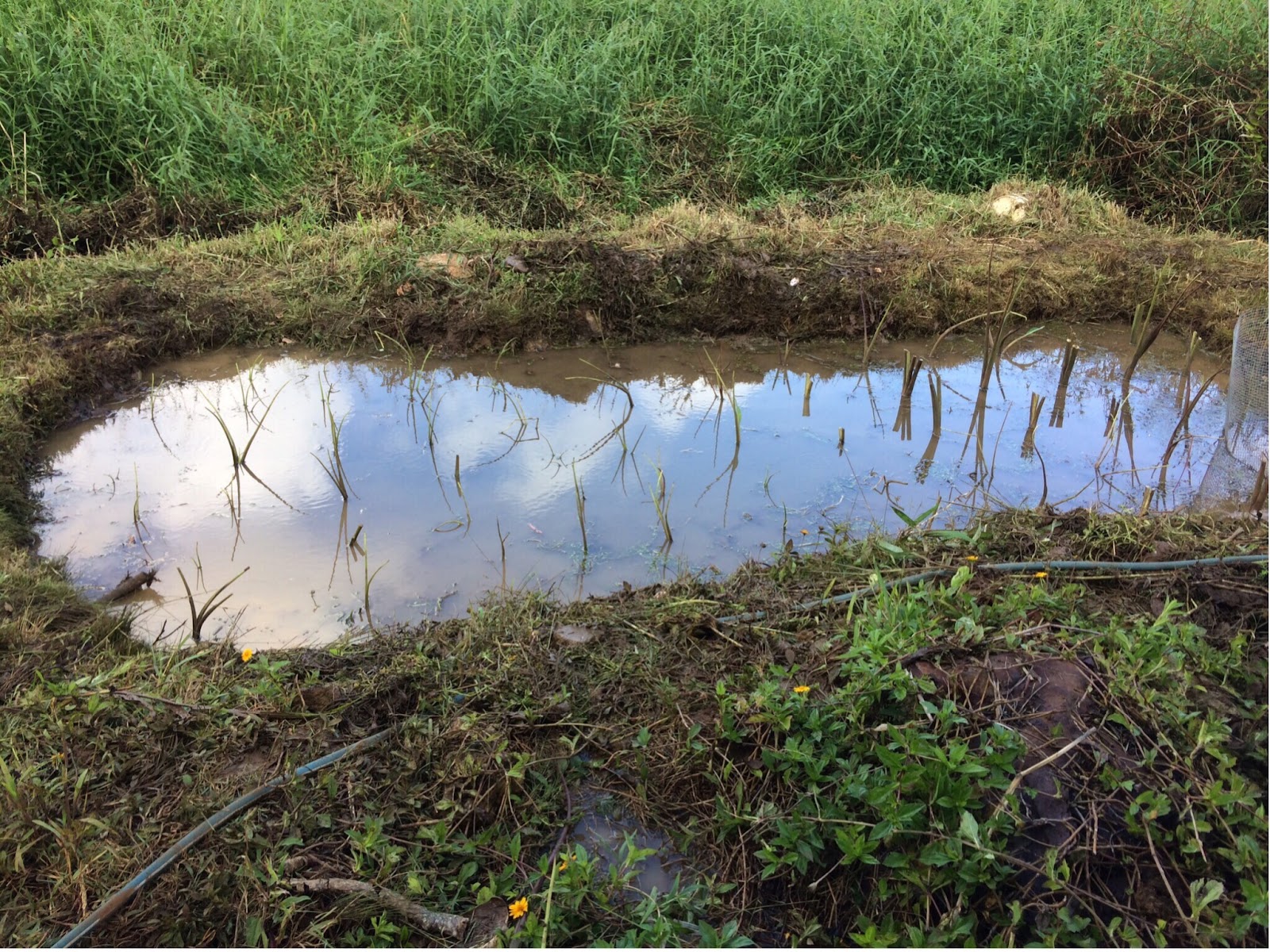Thick. Slimy. Mud.
The Haverly's invited us to help them harvest their Taro (Kalo in Hawaiian) patch (Lo'i) on Saturday. We were excited to be able to help them and learn more about our ancestors! We got there at nine and were instructed to wear grubby clothes (because the mud stains everything) and no shoes. Unless you have special mud shoes, the mud steals them and takes them to the underworld ;)
The Kalo grows deep in the mud, but the mud is also a mercy - it keeps the bugs away. The Kalo has a long green top and then a potato-shaped root. The process has spiritual significance and there are many analogies about taking care of the family. The top of the parent plant is replanted after the harvest and becomes the next crop.
 |
| Angela and Lana |
 |
| Maile and Pili - troublemakers :) |

 |
| Angela, Pili, Maile |
 |
| After picture. Kalo has been harvested and new families will grow! |
Every part of the Kalo must be cooked to be consumed because it has an itchy quality. When we were rinsing and cutting the roots off, we had to be careful (often gloves are worn). The top leafy part can be simmered down and used kind of like spinach. It is used in local foods such as Lau Lau and chicken or squid Luau.
These pictures don't even do justice to how muddy we got. Isaac and Kealaula (Kea's oldest son) were shoulder deep in the water, and were given the task of unplugging any spots in the water flow from the source (irrigation) and past the lo'i.
James found a huge toad in the Lo'i but we were too muddy to get a good picture. Lydia even got in next to me and pulled out quite a few Kalo.
The bottom part is steamed, pealed (the skin is thicker than a potato, more like an avacado) and then pounded. We even got to pound poi! We sat on the floor in the living room and used these

It was hard work! Once the lumps have been pounded out, it makes a sticky purple-ish grey substance call Pa'i'ai. We are some with the chicken luau and rice. It was yummy! I liked it much more than poi, partly it was so fresh and partly because it was thicker. Poi is made when Pa'i'ai is smoothed out even more and thinned slightly with water.
No comments:
Post a Comment